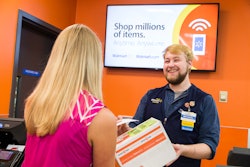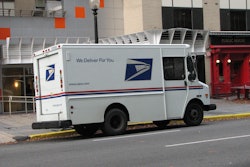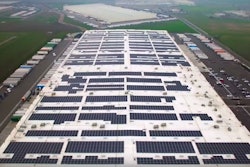
The coming of Amazon Go stores marks a significant shift in the design of in-store retail experiences. The technology deployed by Amazon aims to streamline shopping by reducing the time it takes for consumers to find their desired products and checkout. If all goes as Amazon plans, consumer expectations may eventually be transformed by this new way of shopping just like Amazon.com set the standard for online buying.
For manufacturers and distributors, Amazon Go is a showcase for the technologies that may change the retail supply chain in the years ahead. From predictive ordering to RFID chips, companies need to become familiar with the technology that Amazon is using, and understand its implications on their business and the future of business-to-business (B2B) purchasing. As the adoption of these technologies becomes more widespread, retailers may expect suppliers to offer similar streamlined purchasing experiences.
The Robots Are Coming: Predictive Ordering Comes into Focus
Predictive ordering is the ability to compile, suggest and execute purchase orders with a software application. The software uses data and trends based on previous sales history, consumption patterns and other inputs to make recommendations on product mix, quantities, pricing, delivery dates or other attributes of an order. The promise of predictive ordering is that it can complement human decision-making or even replace it entirely, allowing for greater automation and more lean business processes.
For example, in 2013, Amazon filed for a patent described as a “method and system for anticipatory package shipping” designed to cut delivery times and improve consumer satisfaction by predicting what a shopper is going to buy before they buy it—and then to ship goods to the shopper’s local area or actual location before the sale is made. The patent outlines that order history, interactions with promotions and browse/search history may be used as inputs to the decision to speculatively ship a package, which could then be ready to fulfill a predicted order or be promoted aggressively to a customer while in transit.
To be effective, predictive ordering relies on a number of important factors:
- Accurate data. How easy is it to gather correct data about existing shelf quantities, sales and shrink volumes?
- Timely data. How frequently is this data collected? How quickly and easily can this data be transmitted to connected systems for automated analysis to enable decision-making?
- Sufficient data. Is there a statistically significant dataset of historical information that provides enough training events for the software algorithm or logic to be effective?
- Ability to react. Can the supply chain react to the data and predictions driven by the system in a way that matters to the customer?
Technology Advancements Unlock the Potential of Predictive Ordering
In the past, satisfying the prerequisites needed for predictive ordering to work was an impossibility because of the mostly analog and disconnected nature of the supply chain. However, a number of technological innovations are allowing predictive ordering to come into focus for manufacturers, distributors and retailers:
- Computer vision. The use of cameras and imaging technology can help determine the quantity of items present on a shelf or display, while recognizing when an item was picked or returned.
- Sensors. Pressure-, light- or weight-sensitive sensors can detect item quantities or volume used (in the case of liquid products like beverages, oils, etc.).
- RFID. Items that have RFID tags attached can be read remotely by readers without the need for scanning, allowing for devices or smart shelves to be inventory-aware of all products down to the individual unit level. RFID tag costs dropped substantially in recent years to prices around 6 cents per tag.
- Point-of-sale and inventory data feeds. These allow for real-time checkout and inventory data to drive suggested orders of particular SKUs based on model stock levels.
- Machine learning. Advancements in software, predictive analytics, deep learning and neural networks are making the automated processing and analysis of all of a company’s internal and third-party data feeds more possible than ever. As a result, companies are able to automatically discover insights and make smarter decisions at a scale and speed that would have been impossible by human analysis alone.
Amazon Go Applies New Technologies to Reimagine the Customer Experience
The Amazon Go concept was announced by Amazon in December 2016, which promises a checkout-free shopping experience in stores, using a variety of technology to achieve a just-walk-out consumer experience.
According to a patent filed in 2014, “users may pick items from within the facility, place the items into a cart, bag, pocket or otherwise carry the items, and the items are automatically identified and associated with the user. When the user exits the facility, the items may be transitioned from the facility to the user and the user charged a fee for the items. This may be done without the user having to undergo the additional step of checking out with a cashier …"
Amazon’s new store model allows for lean store operations through predictive ordering by using computer vision, deep learning algorithms, and sensor fusion to gather and analyze the necessary data.
Fully automated predictive ordering allows for just-in-time and lean inventory management at the store level and back through the upstream supply chain, trimming out unnecessary costs and inefficiencies. As a result, Amazon can pass these savings onto the consumer or simply operate each store more profitably on a unit level.
Implications for the Wholesale Distribution and Retail Supply Chain
While Amazon is taking the lead in piloting the in-store experience of the future, it certainly isn’t going to be the last. As the technology that makes Amazon Go a reality becomes more commonplace across retailers, all players that are part of the traditional wholesale distribution network and retail supply chain may be forced to more deeply integrate systems.
By working to automate and digitize processes in order to capture the necessary data, these suppliers can benefit from a wide spectrum of data at both the retailer and store level that can be seamlessly shared between individual companies or systems within the entire supply chain. The impact of a more connected supply chain can be that all participants are able to implement various levels of predictive ordering to drive out costs and facilitate more precise inventory management.
In turn, it may also require more nimble, higher frequency transport of product to individual stores from distribution centers and warehouses to take advantage of spikes in consumer demand in real time and ensure fully stocked shelves. Likely, customer service representatives and sales reps calling on retail accounts should also be able to improve or enhance their sales, and help customers make better decisions through better insight into demand.
The growth of the connected supply chain and predictive ordering may be led by the most technologically advanced players in the market. However, the prospect of disruption to the retail supply chain requires that all manufacturers and distributors that want to compete effectively in the future begin investigating and planning to implement these technologies today.
Michael Elmgreen is the CMO at Handshake.

















